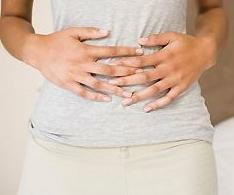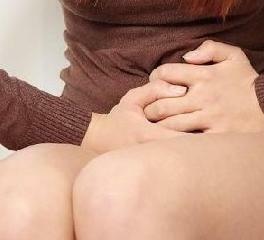 Inflammation of the appendages in women is an infectious pathology, while the process affects the ovaries or fallopian tubes, but not the uterus itself. Penetration of the pathogen of infection in the body occurs in various ways.
Inflammation of the appendages in women is an infectious pathology, while the process affects the ovaries or fallopian tubes, but not the uterus itself. Penetration of the pathogen of infection in the body occurs in various ways.
The disease can last for a long time without symptoms, sometimes characterized by the appearance of pains in the lower abdomen and irregularities in the menstrual cycle. The treatment is aimed at destroying the pathogen and restoring the function of the appendages of the uterus.
Causes
Why do women have inflammation of the appendages, and what is it? In medicine, this disease is called salpingoophoritis. If the inflammation affects only the fallopian tubes, then salpingitis is diagnosed. Inflammatory process, which affects only the ovaries, is called oophoritis.
The development of the inflammatory process in the appendages of the uterus occurs under the influence of pathogenic and opportunistic microorganisms. There are two types of disease:- specific adnexitis, caused by diphtheria bacteria, tuberculosis rod, gonococci;
- nonspecific salpingo-oophoritis, caused by viruses, fungi, E. coli, streptococci, staphylococci, mycoplasmas, chlamydia and other microorganisms.
The penetration of infection into the appendages of the uterus can occur in the following ways:
- ascending(pathogenic microbes from the vagina penetrate into the uterus, bypassing the cervical canal, into the tubes, and then can enter the ovaries);
- downward(in the abdominal cavity there is already inflammation, which gradually changes to healthy tissues);
- hematogenous(microbes enter the fallopian tubes and ovaries with blood from other internal organs).
Probability of inflammation of appendagesincreases with the action on the body of provoking factors:
- hypothermia;
- weakening of immunity;
- use of a contraceptive method such as an intrauterine device;
- unprotected sex;
- childbirth or abortion.
Inflammation of appendagescan occur in three forms:
- acute;
- chronic;
- latent (asymptomatic, or sluggish).
The disease can be diagnosed at any age. For help to the doctors, young girls who do not live sexually, and elderly women who have menopause come.
Symptoms of inflammation of the appendages
 In the case of inflammation of the appendages in women, the presence of certain symptoms depends on certain factors:
In the case of inflammation of the appendages in women, the presence of certain symptoms depends on certain factors:
- the pathogenicity of the acquired microorganism, its species;
- from the course of the disease, whether it is an acute process, with pronounced symptoms, or chronic, with an erased, hardly noticeable symptomatology;
- the ability of the girl's body to resist microorganisms and fight the inflammatory process, from the state of the immune system.
In acute formwomen complain of the following symptoms:
- strained abdomen in the lower parts;
- pain in the lower abdomen, sometimes giving to the legs or lower back;
- elevated body temperature (it can reach 39 degrees);
- change in the menstrual cycle (sudden bleeding or delay in menstruation);
- vaginal discharge, different from normal (they can be greenish-purulent or yellowish, abundant or foamy).
Not completely cured disease in the acute period can go into chronic inflammation of the appendages, the symptoms of which depend on the period of remission or exacerbation. Each second woman with chronic adnexitis has the following pathological changes:
- menstrual cycle disorders;
- disorder of sexual function;
- concomitant diseases of urinary organs (cystitis, pyelonephritis), etc.
During the period of exacerbation, all the symptoms characteristic of acute adnexitis are resumed.
Chronic adnexitis
Chronic adnexitis develops due to untimely or poor-quality treatment of the acute form of the disease, it occurs with periodic seasonal exacerbations. This form of inflammation of the appendages is characterized by the presence of blunt, aching pains in the lower part of the abdomen, which give into the vagina and lumbar region. Palpation of the abdomen determines a moderate soreness.
In connection with the structural and functional transformations in the ovaries (absence of ovulation, hypoestrogenism), chronic inflammation of the appendages in women is accompanied by a violation of the menstrual cycle, which manifests itself as oligomenorrhoea (scanty menstrual period), polymentorrhea (profuse menstrual period), algomenorrhea (painful menstruation). Also, patients can complain about the lack or decrease of sexual desire, the appearance of pain during intercourse.
Diagnostics
The above symptoms may be present in other genital diseases, so an accurate diagnosis can be made. only the genicologist after examination of the patient, the collected anamnesis, the results of laboratory and instrumental studies:
- Ultrasound of the uterus and appendages;
- general blood analysis;
- PCR-diagnostics (smear from the vagina), allowing to establish sexual infections;
- Colposcopy (examination of the vagina and its walls);
- bakpos;
- tomography;
- laparoscopy.
The signs of inflammation of the appendages can be determined by the results of a blood test. In inflammatory processes, the blood formula changes significantly, the ESR increases. In addition, with a gynecological examination at a gynecologist's appointment, a woman experiences severe pain in the ovaries and uterus.
Effects
Any inflammation of the appendages is dangerous because the following complications are possible:
- outgrowth into a chronic form;
- infertility, as a result of the adhesion process, in which there is obstruction of the fallopian tubes and anovulation;
- a rather high risk of ectopic conception;
- suppurative complication (tuboovarial formation) - purulent melting of the ovaries and tubes with a subsequent abscess.
Prevention
To avoid adnexitis, we recommend adhering to such prevention rules:
- Regularly visit a gynecologist, not resisting an examination on the chair, take swabs.
- Avoid hypothermia, dressing with weather, changing clothes after swimming, avoiding sitting on cold objects.
- If abortion is necessary, do this early, either with the help of medication, or a mini-abortion (avoid scraping).
- Cure teeth, intestines and other foci of chronic infection.
- Use barrier methods of contraception.
- In time, treat gynecological diseases.
- Follow the rules of healthy eating.
- Observe the rules of intimate hygiene.
- Avoid douching.
- Avoid stress.
Thus, inflammation of the appendages is a serious disease requiring timely treatment, which implies strict compliance with medical prescriptions.
Treatment of inflammation of the appendages
When diagnosing inflammation of the appendages, treatment for women should be comprehensive: a combination of medications with physiotherapy, gynecological massage, osteopathy, physiotherapy.
The main point in the therapy of inflammation are antibiotics. They are selected with a broad spectrum of action and a maximum half-life. In addition, the woman herself needs to monitor her lifestyle (proper nutrition, abstinence from sexual activity, physical education, refrain from smoking and alcohol).
The disease can not be started, since the inflammatory process soon turns into a chronic stage, which leads to infertility.
Antibiotics for inflammation of the appendages
Antibiotics for inflammation of the appendages - this is the first and main condition that must be met for a favorable outcome of the disease. How to treat inflammation of the appendages, the dosage and the number of receptions for each particular woman is determined by a specialist, however we will give you the most often prescribed pairs of medicines:
- Derivatives of nitroimidazole (eg Metronidazole) in order to eliminate anaerobic flora capable of living in anoxic environment, for example gonococci (causative agents of gonorrhea);
- Inhibitor-protected penicillins (Amoxiclav), cephalosporins of the 3rd generation (Ceftriaxone), macrolides (Erythromycin), etc., which act on aerobic (living in the oxygen medium) flora;
- Antifungal drugs (eg, Diflucan, Nystatin).
The first three or four days before the normalization of the condition, all these drugs are injected. Then you can go to the tablet form and reduce the dose.
Concomitant treatment
In addition to prescribing antibacterial drugs, detoxification therapy (intravenous infusions of saline solutions, glucose, haemadeza, rheopolyglucin and others in a volume of 2-3 liters) is carried out.
Coping pain, and reducing the inflammatory process is carried out with anti-inflammatory non-steroid drugs in the form of tablets. These are Diclofenac, Ibuprofen, Cetarol and other drugs. Necessarily appoint vitamins C and B, as well as tablets from allergies.
When removing the acute process and in the treatment of chronic inflammation of the appendages without exacerbation, physiotherapy is widely used: electrophoresis copper and zinc in the phases of the menstrual cycle, electrophoresis with lidase or iodine, ultrasound, high-frequency pulse currents (CMT, DDT). Also in the regenerative treatment use immunomodulators, autohemotherapy, injection of aloe, FIBSa, Longidazu and others. With chronic adnexitis, sanatorium treatment is shown - mud, paraffin, therapeutic baths and douching.
Candles for inflammation of the appendages
To reduce signs such as inflammation, pain, swelling, and temperature, special candles are used that can relieve inflammation. Can appoint and such candles that can strengthen immunity, and this is very important in any disease. Also, these drugs cleanse the body of harmful substances.
All candles are prescribed by a doctor, but in any case such treatment will be additional.
Folk remedies
At home, you can use some folk recipes:
- Take 4 teaspoons finely choppedthe roots of the buckthorn, the chernobylnik and the peony, add 3 teaspoons of roots of the bugle and elecampane.After that, 2 tablespoons of the resulting mixture pour half a liter of boiling water. Boil for half an hour on low heat, and after let cool for half an hour. After strain and you can add a little honey for taste. Take the drug should be half a glass 3-4 times a day.
- One tablespoon choppeddry herbs of the hog's uterus pour a glass of boiling water. Insist 2 hours. Strain. Take 1/3 cup 3 times a day for half an hour before meals. The course of treatment is 1 month. After a month of treatment of adnexitis with a mating uterus, it is advisable to drink 2 months of another infusion - from the field grass of the field. 1 tbsp. l. herbs pour a glass of boiling water, insist 4 hours, drain. Drink for 1 hour. l. 30 minutes before meals 4 times a day.
- Bulderenezshould be collected at the very beginning of flowering (until they did not start with insects). Tincture of them has excellent antiseptic, anti-inflammatory and analgesic properties. The Lithuanian jar is filled with inflorescence balls, poured with vodka and sent for 15 days to a dark cool place. This infusion rubs the lower abdomen, and the inflorescences are applied in the form of compresses.
- Takeflowers of mother-and-stepmother, sweet clover, golden thousand in the same proportions. Mix, pre-chop, pour boiling water, let it brew for an hour, then strain the broth through gauze and drink half a glass twice a day. In the treatment of abstinence from sexual intercourse is recommended.
Remember that folk remedies are only a supplement, and can not in any way replace the medication prescribed by a specialist.

How to choose probiotics for the intestine: a list of drugs.

Effective and inexpensive cough syrups for children and adults.

Modern non-steroidal anti-inflammatory drugs.

Review of tablets from the increased pressure of the new generation.
 Antiviral drugs are inexpensive and effective.
Antiviral drugs are inexpensive and effective.



